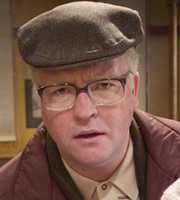- Welcome to Cook'd and Bomb'd.
-
 Gold orders Bottom Exposed...
by Mobius
Gold orders Bottom Exposed...
by Mobius
[Today at 04:02:33 AM] -
 Returning to Blighty (for...
by Old Thrashbarg
Returning to Blighty (for...
by Old Thrashbarg
[Today at 03:48:19 AM] -
 I will not have it
by jamiefairlie
I will not have it
by jamiefairlie
[Today at 03:38:08 AM] -
 Fallout TV series
by evilcommiedictator
Fallout TV series
by evilcommiedictator
[Today at 03:15:55 AM] -
 Cheese Rolling
by Kankurette
Cheese Rolling
by Kankurette
[Today at 02:52:52 AM] -
 The Last CaB post that made...
by Kankurette
The Last CaB post that made...
by Kankurette
[Today at 02:50:55 AM] -
 Tim Heidecker and Gregg Turkingtons...
by QDRPHNC
Tim Heidecker and Gregg Turkingtons...
by QDRPHNC
[Today at 02:41:38 AM] -
 Apple TV recommendations?
by Blue Jam
Apple TV recommendations?
by Blue Jam
[Today at 02:27:49 AM] -
 Jimmy Carr's new Netflix special....
by McFlymo
Jimmy Carr's new Netflix special....
by McFlymo
[Today at 02:22:12 AM] -
 Fallout 4 free update coming...
by evilcommiedictator
Fallout 4 free update coming...
by evilcommiedictator
[Today at 02:20:14 AM]
Members
 Total Members: 17,819
Total Members: 17,819 Latest: Jeth
Latest: Jeth
Stats
 Total Posts: 5,577,468
Total Posts: 5,577,468 Total Topics: 106,658
Total Topics: 106,658 Online Today: 781
Online Today: 781 Online Ever: 3,311
Online Ever: 3,311- (July 08, 2021, 03:14:41 AM)
Users Online
 Users: 10
Users: 10 Guests: 589
Guests: 589 Total: 599
Total: 599Ambient house, ambient techno and early IDM
Started by purlieu, August 02, 2022, 06:37:58 PM
Previous topic - Next topic
User actions


